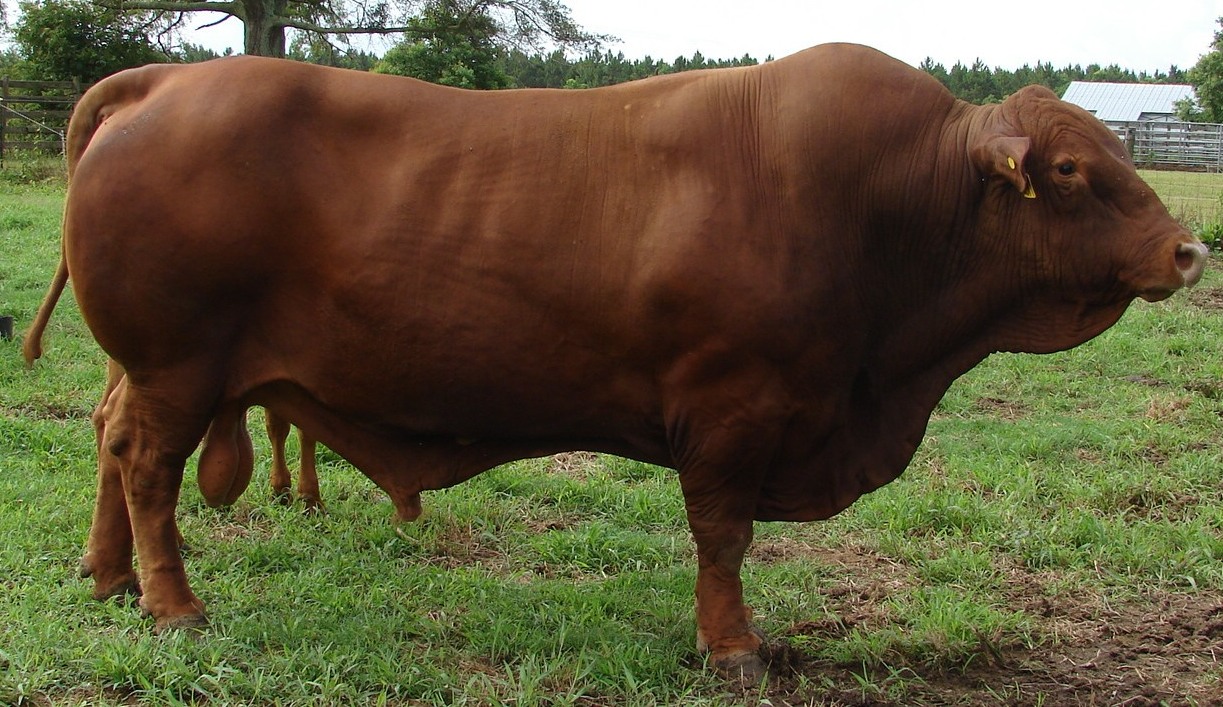Senepol on:
[Wikipedia]
[Google]
[Amazon]
 The Senepol breed of
The Senepol breed of
History and Development of Senepol Cattle by H. D. Hupp
genetic characterization using SNP markers
Senepol Cattle Breeders Association
Australian Senepol Cattle Breeders Association
The Senepol Cattle Breeders' Society of South Africa
{{Cattle breeds of the United States Cattle breeds Cattle breeds originating in the United States
 The Senepol breed of
The Senepol breed of beef cattle
Beef cattle are cattle raised for meat production (as distinguished from dairy cattle, used for milk production). The meat of mature or almost mature cattle is mostly known as beef.
In beef production there are three main stages: cow-calf oper ...
was developed on the Caribbean Island of St. Croix
Saint Croix; nl, Sint-Kruis; french: link=no, Sainte-Croix; Danish and no, Sankt Croix, Taino: ''Ay Ay'' ( ) is an island in the Caribbean Sea, and a county and constituent district of the United States Virgin Islands (USVI), an unincor ...
. It has long been thought that Senepol originated from just crosses between N'Dama
N'Dama is a breed of cattle from West Africa. Other names for them include Boenca or Boyenca (Guinea-Bissau), Fouta Jallon, ''Djallonké'' or ''Djallonké cattle'', Fouta Longhorn, Fouta Malinke, Futa, Malinke, Mandingo (Liberia), and N'Dama Pe ...
cattle, imported in the late 19th century, and Red Poll
The Red Poll is a dual-purpose breed of cattle developed in England in the latter half of the 19th century. The Red Poll is a cross of the Norfolk Red beef cattle and Suffolk Dun dairy cattle breeds.
Description and uses
The cattle are red, pre ...
cattle, but it is actually an admixed breed that consists of Red Poll, N'Dama, Criola and a trace amount of Zebu
The zebu (; ''Bos indicus'' or ''Bos taurus indicus''), sometimes known in the plural as indicine cattle or humped cattle, is a species or subspecies of domestic cattle originating in the Indian sub-continent. Zebu are characterised by a fatty ...
. The Senepol breed combines characteristics of heat tolerance and insect resistance with the docile nature, good meat, and high milk production of the Red Poll. They are polled, short haired, and colored red, black or brown.
Breed history
Being better suited to the island's climatic conditions than European breeds, it was reported that 60 heifers and two bulls of the N'Dama Petite breed were imported to St. Croix fromSenegal
Senegal,; Wolof: ''Senegaal''; Pulaar: 𞤅𞤫𞤲𞤫𞤺𞤢𞥄𞤤𞤭 (Senegaali); Arabic: السنغال ''As-Sinighal'') officially the Republic of Senegal,; Wolof: ''Réewum Senegaal''; Pulaar : 𞤈𞤫𞤲𞤣𞤢𞥄𞤲𞤣� ...
in 1860 by George Elliot. This became the nucleus of the N'Dama cattle herd on St. Croix and by 1889, Henry C. Nelthropp, at the Granard Estates, was one of the largest N'Dama breeders with 250 purebred cattle. In 1918 Henry's son, Bromley, bought a Red Poll bull from Trinidad
Trinidad is the larger and more populous of the two major islands of Trinidad and Tobago. The island lies off the northeastern coast of Venezuela and sits on the continental shelf of South America. It is often referred to as the southernmos ...
(which originated in England) to improve the cows' milking ability and remove their long horns. Two of this bull's sons were used as herd sires. In 1942 another Red Poll bull was purchased, this time from St. Thomas, and two locally raised purebred Red Poll cows were added to the herd.
The admixed cattle were selected for solid red color, natural polling and heat tolerance. These offspring were dispersed to four main herds on the island. The name Senepol was adopted in 1954 and a breed registry was established in the late 1960s. Aided by the United States Department of Agriculture
The United States Department of Agriculture (USDA) is the federal executive department responsible for developing and executing federal laws related to farming, forestry, rural economic development, and food. It aims to meet the needs of com ...
the College of the Virgin Islands Extension Service began on farm performance testing in 1976. In 1977 22 cows were taken to the United States and the breed has since spread across the southern states. There are now more than 500 breeders with more than 14,000 registered cattle. They are also found in Australia, South Africa, Botswana, Namibia, Venezuela, Mexico, Paraguay, Philippines, Zimbabwe, Brazil, Puerto Rico and Dominican Republic.
Genetic characterization
However, genetic characterization using high throughput SNP genotyping recently demonstrated that the Senepol genome contains crosses between European taurine (such as Red Poll) with some Zebu influence. The study showed that genetic samples of Senepol DNA collected from four different regions of Venezuela contained an average of 89% European taurine ancestry (ranging from 66–95%), 10.4% Zebu ancestry (ranging from 4–33%) and 0.6% African taurine ancestry (ranging from 0–4.1%). Among the African taurine breeds is the N'Dama breed from West Africa.Disease and insect resistance
USDA research indicates that Senepol have greater immune response when compared to other beef breeds. This is likely due to the Bos indicus influence in Senepol, and is also aided by generations of natural selection being applied on the island of St. Croix. In the 1950s, with sugar cane becoming less economic, the United States Department of Agriculture put resources into the application of scientific breeding to Nelthropp Senepol under Richard Marshall Bond. This was covered in an article on the Virgin Islands in the February 1956 National Geographic.References
External links
History and Development of Senepol Cattle by H. D. Hupp
genetic characterization using SNP markers
Senepol Cattle Breeders Association
Australian Senepol Cattle Breeders Association
The Senepol Cattle Breeders' Society of South Africa
{{Cattle breeds of the United States Cattle breeds Cattle breeds originating in the United States